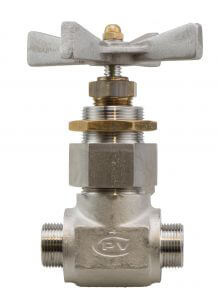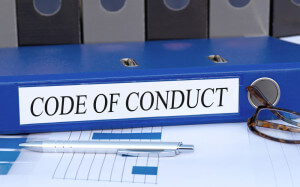How to Choose the Right High Pressure Valve for the Job
In life, you wouldn’t pick a pair of sneakers to go to a black-tie event.
The same goes for engineers; they have many options when it comes to valves. High-pressure
valves are designed to keep things running safely and smoothly, which is why there are no one-size
fits all valves.
Keep reading this article to learn how to select a high-pressure valve.
The Right Temperature
Before you choose a high-pressure valve, you need to keep in mind the temperature of the gas or
liquid flowing through it will have an effect on the valve. For example, steel valves handle higher
temperatures than iron and bronze valves.
You need to keep in mind the temperature of the substance that will be flowing through the valves
before you pick one.
The Materials
Not all valves are made the same. The type of material you choose will depend on the type of job
you need to perform.
Stainless Steel and Monel® materials, for example, can withstand corrosive materials better than
other materials. Choosing the right material will extend the life of the valve.
The Connection Size and Type
The last thing you want is to buy a valve and discover it doesn’t fit. You have to make sure the size
of the valve corresponds with the inlet or outlet (discharge) piping.
Different types of valves have specific inlets and outlet (discharge) points. If you need to determine
the type of connection size, the National Board of Boiler and Pressure Vessel Inspectors
recommends that the valve has to be as big as the inlet.
Set Pressure
As the name calls, these valves must withstand a lot of pressure in order to stay safe and get the job
done. The set pressure of a relief valve is measured according to pounds per square inch.
When you buy a valve, you have to ensure the pressure you put through the valve doesn’t exceed
the MAWP (maximum allowable working pressure).
As a rule of thumb, make sure the MAWP of the valve is 10 percent greater than the maximum
pressure you will apply to it. The relief valve needs to be able to handle the MAWP.
Back Pressure
The back pressure refers to the pressure on the outlet side of the valve directly from the discharge
system.
You need to make sure the valve doesn’t go above 10% back pressure.
Type of Service
It’s important to keep in mind before you get a valve — what type of service you will be using it
for? Substances such as air, gas, and steam, require a different type of valve.
The valve you would use for steam might not be able to transport gas.
Capacity
According to safety regulations, valves should relieve pressure at certain capacities. The capacity
codes are set as follows:
SCFM – standard cubic feet per minute
LBS/HR – pounds per hour
GPM – gallons per minute
These codes will help you determine how much capacity you need.
Choosing the Right High-Pressure Valve: The Bottom Line
Before to pick the right high-pressure valve for a specific job, you need to keep in mind the
capacity, type of service, back pressure, materials, and more.
Need to know how to select the right pressure control valve? Check out this article.

 When the flow of a liquid is restricted as it passes through the valve seat, a low-pressure area is formed on the other side (downstream) of the vena contracta. When that local pressure is lower than the vapor pressure of the fluid, it flashes or vaporizes forming bubbles. These bubbles continue downstream as the pressure returns to normal.
When the flow of a liquid is restricted as it passes through the valve seat, a low-pressure area is formed on the other side (downstream) of the vena contracta. When that local pressure is lower than the vapor pressure of the fluid, it flashes or vaporizes forming bubbles. These bubbles continue downstream as the pressure returns to normal. Safety is a top priority in the industrial workplace. One of the biggest challenges to worksite safety is an untrained or undertrained workforce.
Safety is a top priority in the industrial workplace. One of the biggest challenges to worksite safety is an untrained or undertrained workforce. Dealing with employee theft is never easy. Depending on your company’s policies, you’ll need to go through several steps to effectively handle an employee theft situation.
Dealing with employee theft is never easy. Depending on your company’s policies, you’ll need to go through several steps to effectively handle an employee theft situation. Reducing employee theft for your manufacturing company starts with making sure that you hire the right people. When hiring potential workers, performance background and reference checks help to eliminate those with records of workplace theft.
Reducing employee theft for your manufacturing company starts with making sure that you hire the right people. When hiring potential workers, performance background and reference checks help to eliminate those with records of workplace theft. IChemE, or the Institution of Chemical Engineers, is a global professional membership organization made up of chemical engineering professionals and any individual involve with the process industries.
IChemE, or the Institution of Chemical Engineers, is a global professional membership organization made up of chemical engineering professionals and any individual involve with the process industries. All members of IChemE must adhere to the Code of Professional Conduct. This document contains sections relating to professional duties, relationships, and regulations.
All members of IChemE must adhere to the Code of Professional Conduct. This document contains sections relating to professional duties, relationships, and regulations.